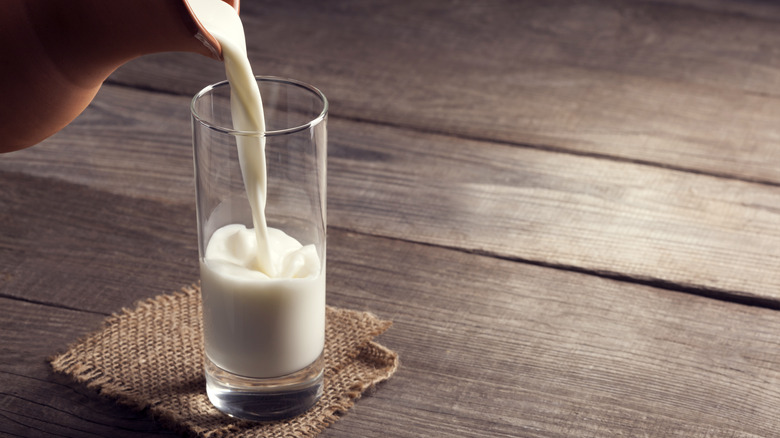This 19th-Century Milk Scandal Poisoned Thousands Of Babies
We're in New York City in the 1850s. An unknown epidemic is sweeping across the city, ravaging infants in their cribs and turning cradles into graves. Close to 8,000 babies in one year, according to The New York Times, had suffered from a bout of horrendous sickness, including nausea and diarrhea, before finally passing away (via Atlas Obscura). As major cities in the 19th century were known to have lackluster sanitation programs, it was suspected by some that poor nutrition and cholera (which had been the cause of several epidemics during that time, per Harvard Library) were behind the tragic deaths.
The true culprit, however, was far more insidious and hidden in plain sight: milk. According to Smithsonian Magazine, Frank Leslie's Illustrated Newspapers ran a scathing 5,000-word report on "milk murderers" in New York City distilleries. Just what exactly was wrong with the milk at the time, and why were the dairymen of the day being called child killers?
"Swill milk" was made with shocking ingredients
Just as a bartender can water down beer to cut corners on drinks, so, too, did the dairymen of the 19th century with their milk. According to WKAR, some dairymen were diluting their milk with water and then adding in flour to give it a thick, "farm fresh" look. There were even rumors that parts of the cow, such as the brains, were mashed into the disingenuous product to make it appear more "natural." Of course, flour and water wouldn't be enough to make children sick, so something else had to be the culprit.
Dairy cows raised near New York City's whiskey distilleries were fed the alcoholic "mash" leftover from liquor production, which of course made them very sick. Cramped stables, poor diet, and abuse led to the cows developing sores, losing their teeth and tails, and producing milk that had a vile blue-gray tint. To disguise this off-colored milk, dairymen combined it with anything from plaster and chalk to eggs and molasses, reports Atlas Obscura. The "swill milk" was then bottled and hawked to unsuspecting crowds throughout the Northeast for several years. Activists helped pass some milk regulations in the 1860s, but customers continued to suffer from unethically made milk until the passing of the Pure Food and Drug Act of 1906.

